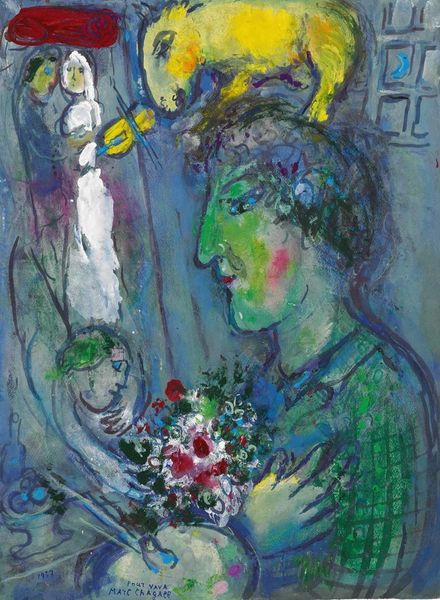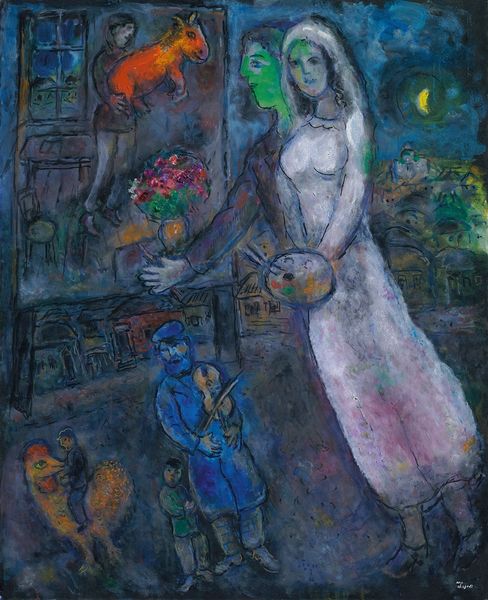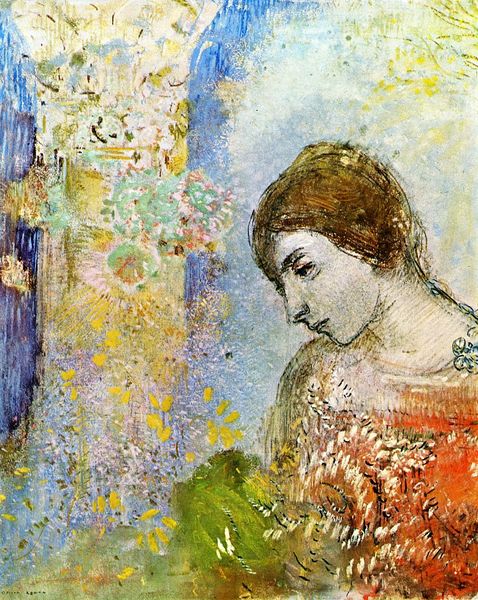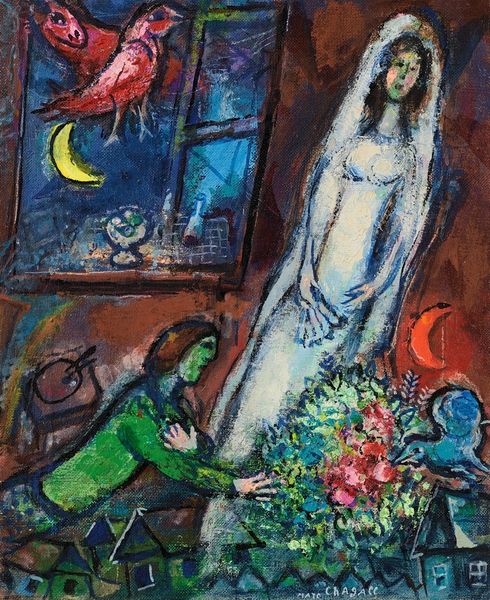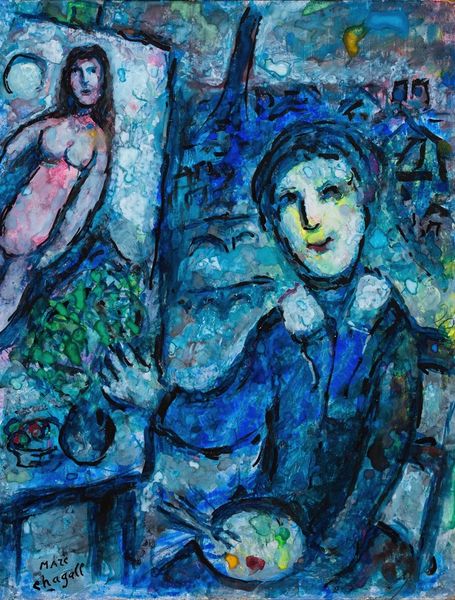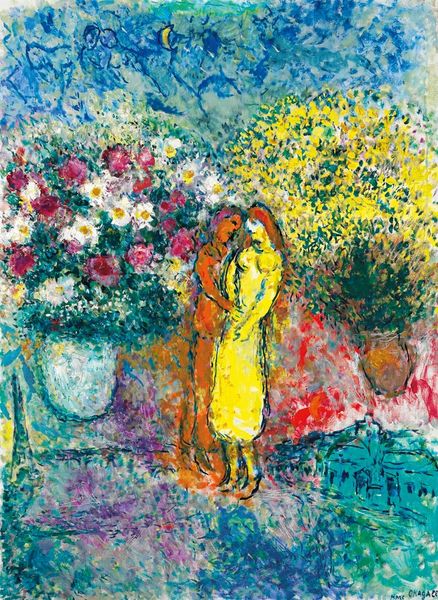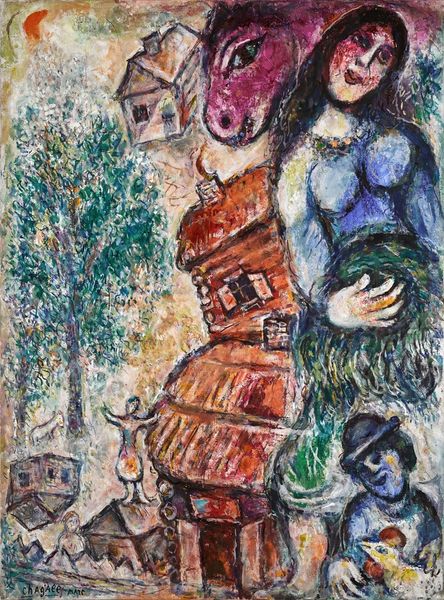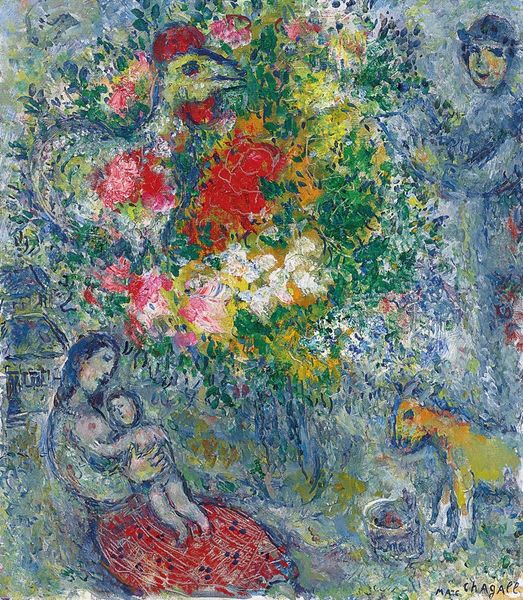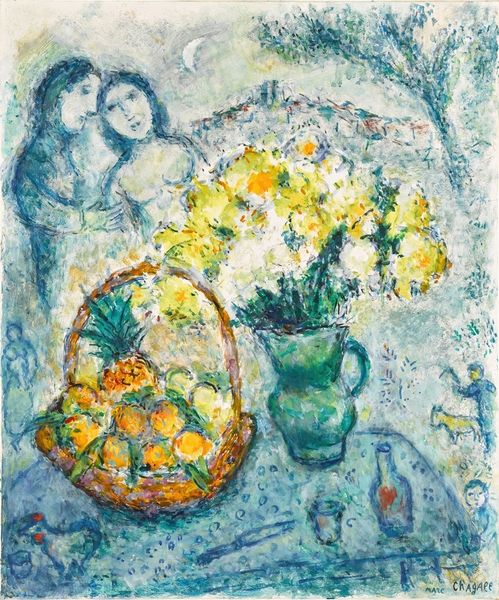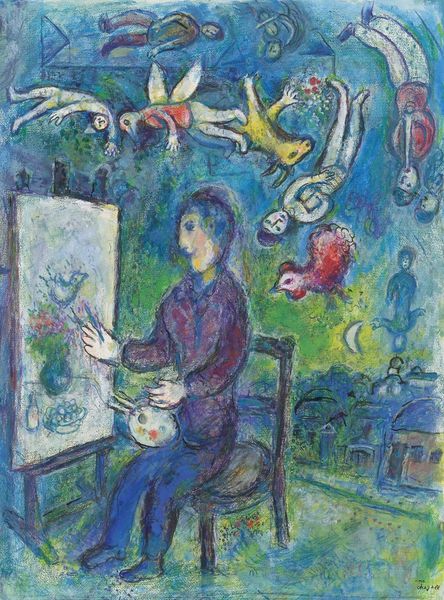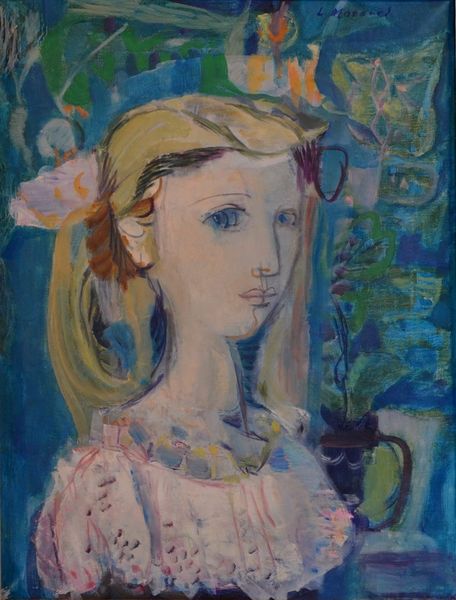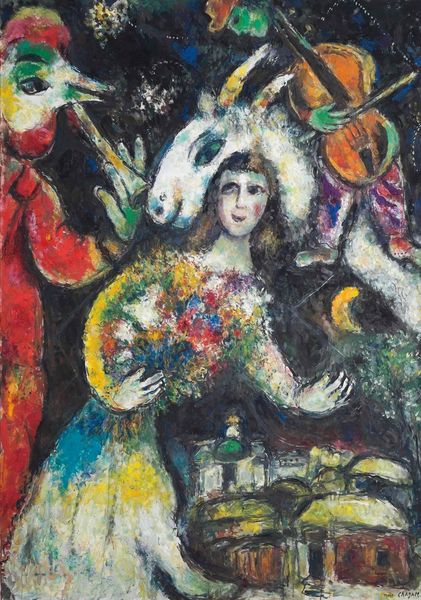
Copyright: Modern Artists: Artvee
Editor: This is "Le Modèle," by Marc Chagall, painted in 1972 using oil paints. The color palette is dominated by blues, creating a cool, dreamlike atmosphere. What strikes me is the layered composition—the model, the artist at work, and the vibrant bouquet—how do you interpret this work in terms of its formal qualities? Curator: The most salient formal element is undeniably the artist's manipulation of color. Observe how the monochromatic blue unifies the diverse pictorial elements into a cohesive whole, overriding the representational disparities between figure, still life, and cityscape. Note also the dynamic brushstrokes; these function less as descriptors and more as active components that animate the surface. Editor: So, you're suggesting the visual experience is more about the painting itself than what's being depicted? Curator: Precisely. Chagall is deploying a restricted palette and energetic mark-making to construct a self-referential pictorial space. Ask yourself, what effect do these choices have on our understanding? It’s almost as though the painting insists on being perceived as an independent object rather than a mere representation of external reality. Editor: I see that now. I was caught up in trying to "read" the imagery, but focusing on the paint and how it's applied changes everything. Curator: Exactly. This work presents a fascinating interplay of line, color, and form, encouraging the viewer to contemplate the aesthetic principles that constitute the painting’s very essence. Editor: This deeper dive really reframed my perspective on how to approach art. It's like learning a new language for seeing. Curator: Indeed, understanding art’s formal language allows for a richer appreciation of its complexities.
Comments
No comments
Be the first to comment and join the conversation on the ultimate creative platform.
